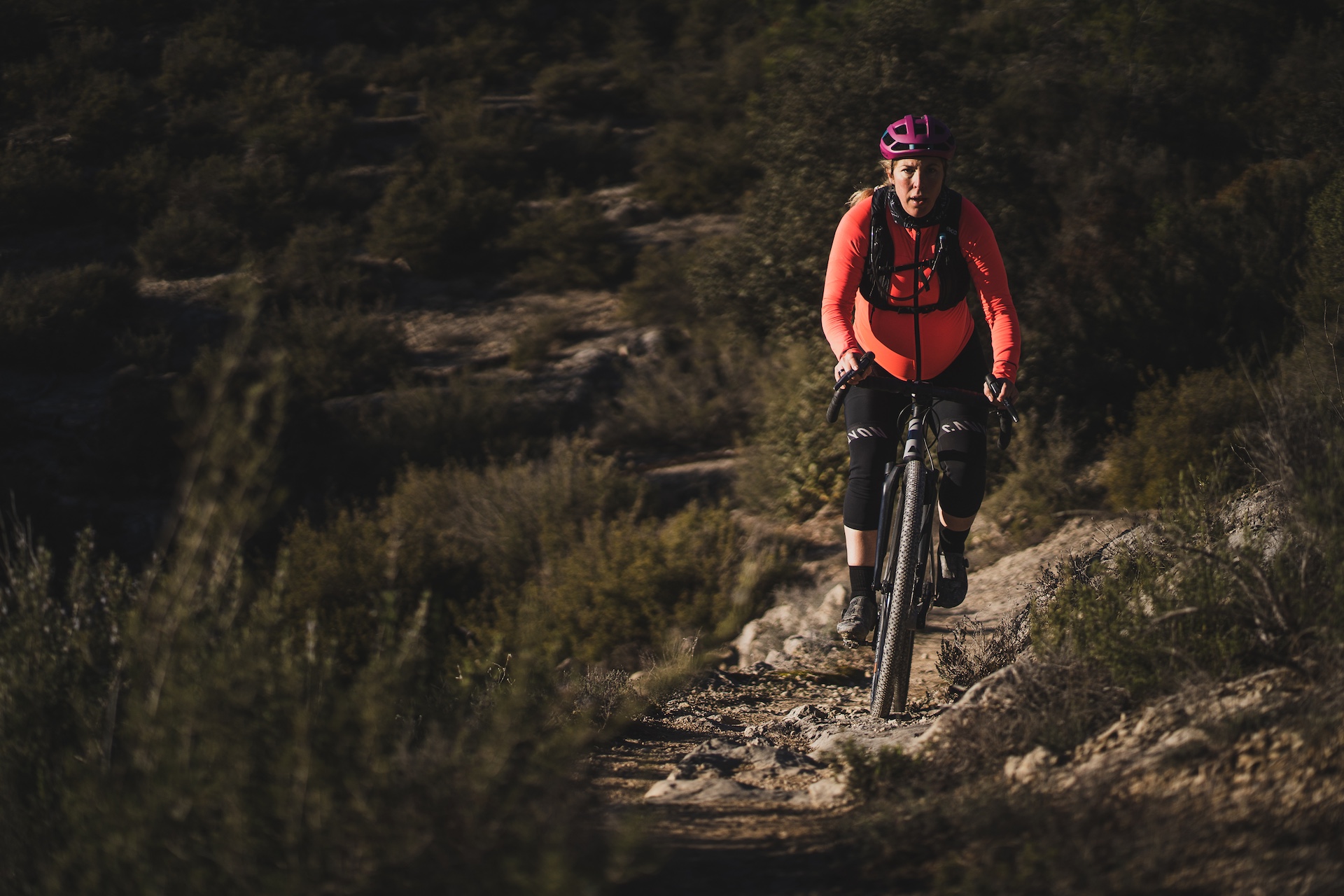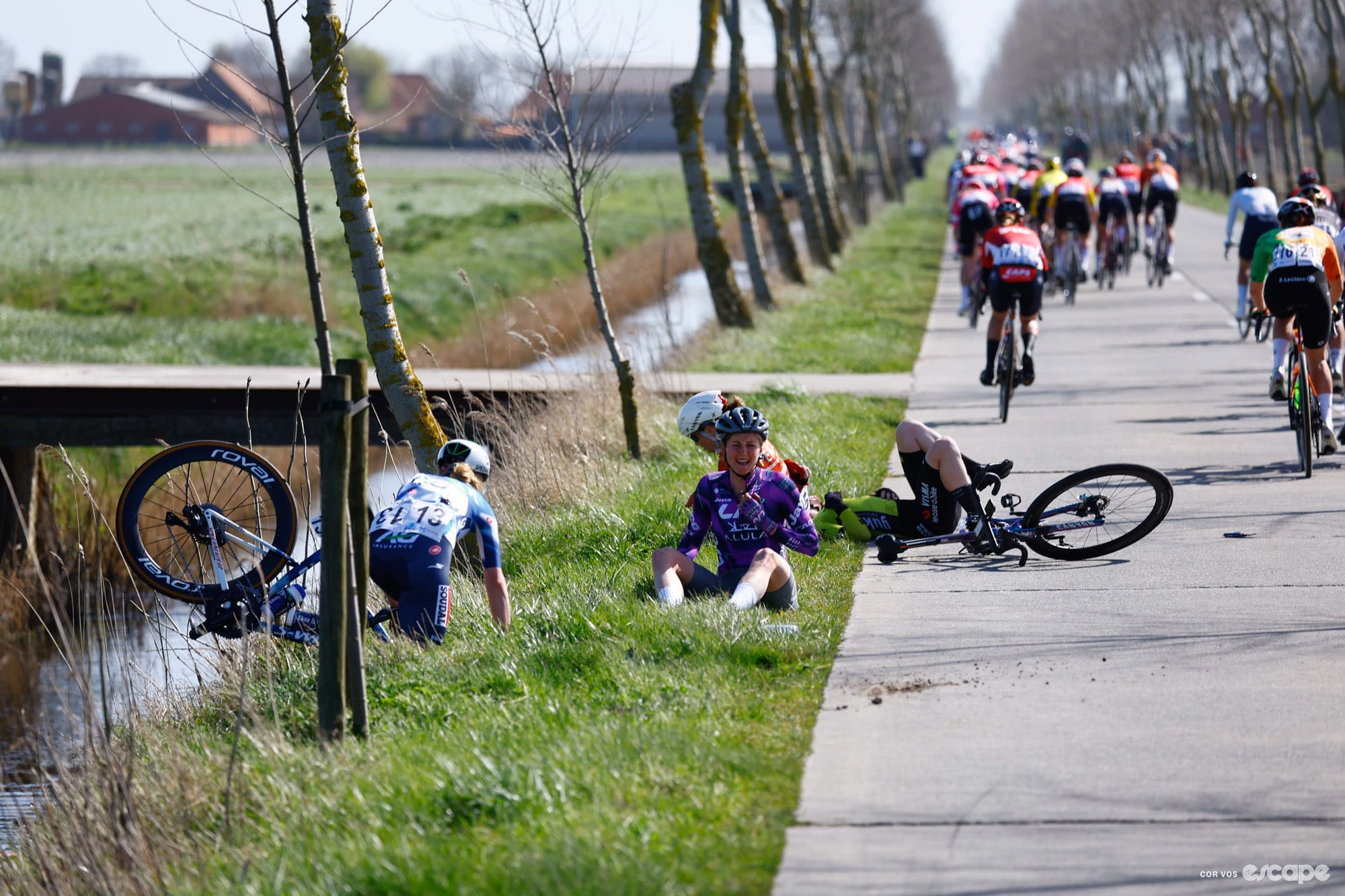How would you feel if you had an injury that was going to keep you off the bike for nine months? If you're anything like me, it probably sounds like a nightmare. Those of us who train regularly know that doing sport is not just about the sport: it’s escape, medicine, meditation, freedom and so much more. A week off the bike with a haematoma, a month from a cracked bone, or months after a surgery – they always feel like hell for me and I end up counting the minutes until I can get out riding again.
There has long been a school of thought that says when you are pregnant you should sit down quietly and wait to give birth. More than nine months off the bike (because you’re not going to want to sit on a saddle for several weeks after giving birth, trust me) – how do people do it? The simple answer is that most people don’t need to.
Sport has always been my sanity, the place where I work out life’s tensions. I’m not sure how sane I would be after nine months on the sofa having grapes peeled for me. At 41 years old, the medical professionals I saw mainly wanted to tell me how high my risk was, how dangerous it was at my age; they did not even want to talk about sport or activity. But there was no way I was going to sit there and let myself get slowly fatter and crazier as the months dripped by. I was going to ride, run, and be outdoors.
Here's some of what I learned along the way, which might help you (or someone close to you).
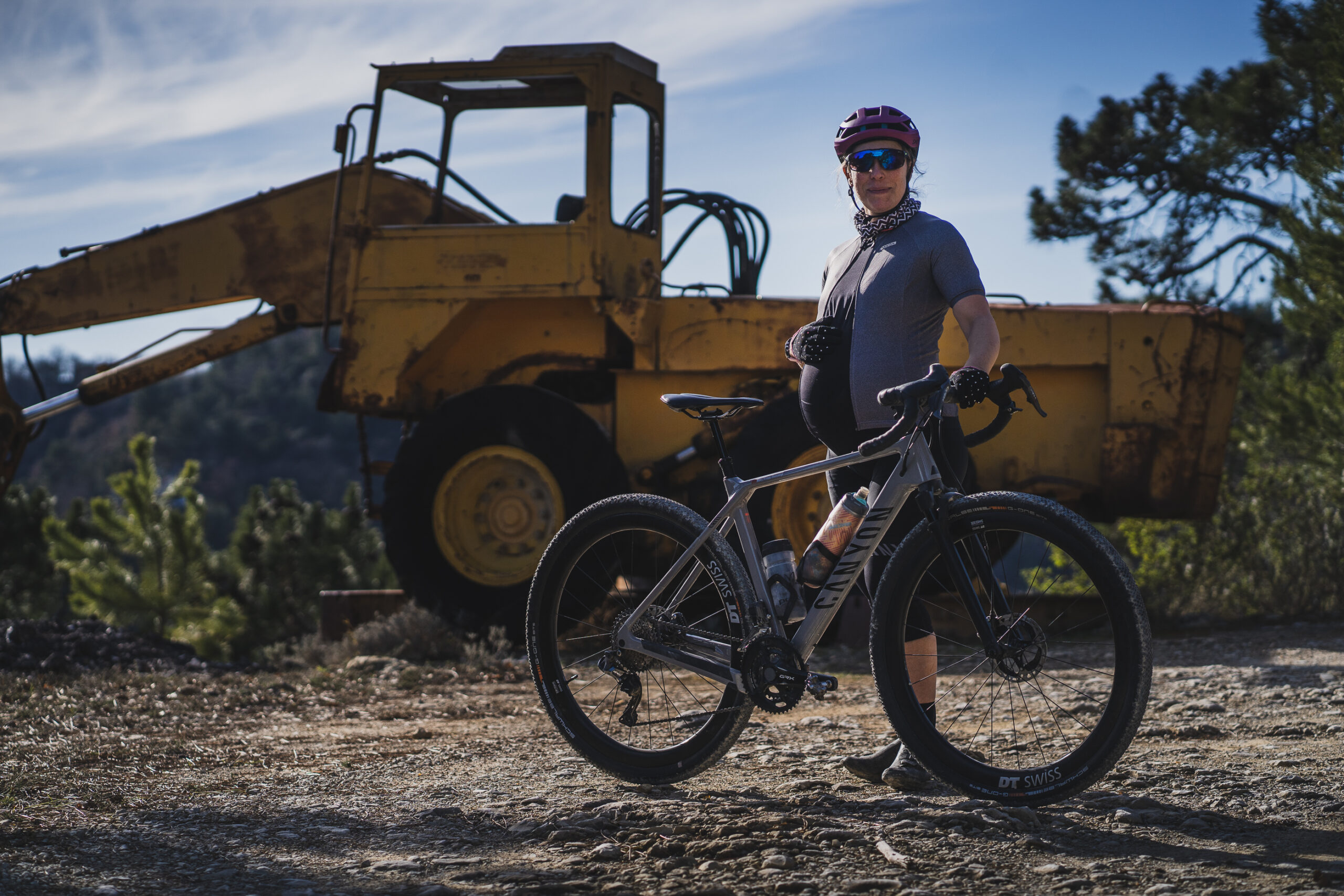
The health benefits of exercising during pregnancy
Many women ask themselves whether they should continue exercising while pregnant. It can be intimidating to look for answers. Where do you start? Who do you trust? The best starting point I found was guidance issued to Australian doctors for physical activity in pregnancy in 2022. Their findings are simple: “All women who are pregnant or planning a pregnancy should be aware of the benefits of physical activity/exercise, and health professionals should encourage safe levels of activity.” In fact, the paper shows that exercise can even potentially reduce the risk of some pregnancy-related complications.
Of course, every mother-to-be should make her own decisions. Whether or not to exercise during pregnancy is a very personal thing and you do need to take care, ideally with the help of an understanding medical professional. The Australian guidelines go on to talk about signs and symptoms that indicate exercise should be modified or avoided, as there are very real risks to be aware of and watch out for.
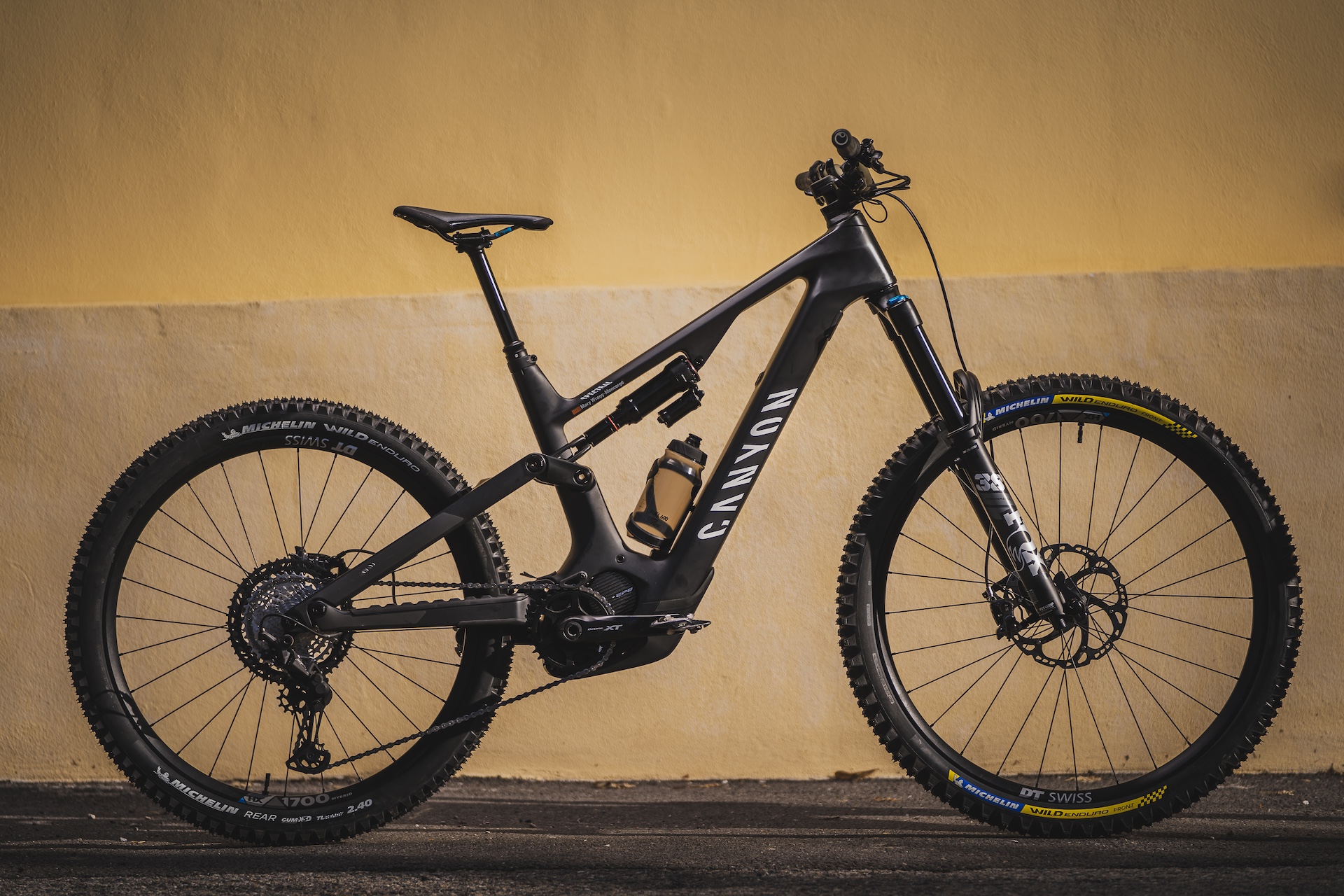
When I first fell pregnant, a friend of ours told us a story. His wife was alone one day when her waters broke. Rather than jump in the car, she grabbed her bike, rode to the hospital and delivered a healthy baby. This is probably more than most people are going to want to do, but isn’t it a very different story of pregnancy to think that this is possible?
I managed to keep riding bikes up to 40 weeks pregnant. I can’t lie, by that point it was getting more uncomfortable and the rides were shorter, but I was out. I was riding. My husband, dog and I are regularly rode trails on both my gravel bike and eMTB. Although it’s different to what I would have done before, those rides were the best part of my week. Towards the end I did stop riding solo – as I got less mobile I felt more and more exposed and having someone there in case something bad happened felt very important too.
Modifying your riding
What sort of riding can you do while pregnant? It really depends on what feels comfortable for you. I am not trying to dodge the question, but this is a very individual question. What are you generally comfortable riding? It is all about comfort zones – as a former elite downhill and enduro racer, I feel at home on challenging, technical trails, so I was happy riding like those. Maybe your comfort zone is a local bridleway or forest track? Maybe there’s a quiet road near your house? There is no right or wrong answer, but you do need to stop and think what kind of riding you would feel comfortable doing because pregnancy definitely isn’t the time for pushing your limits or taking uncalculated risks.
By the third trimester, steps and drops were no longer possible for me as I couldn’t get the baby bump behind the saddle any more. Riding technical, rocky trails stopped soon after, because my centre of gravity shifted and I didn’t feel I could ride them without risking myself and the baby.
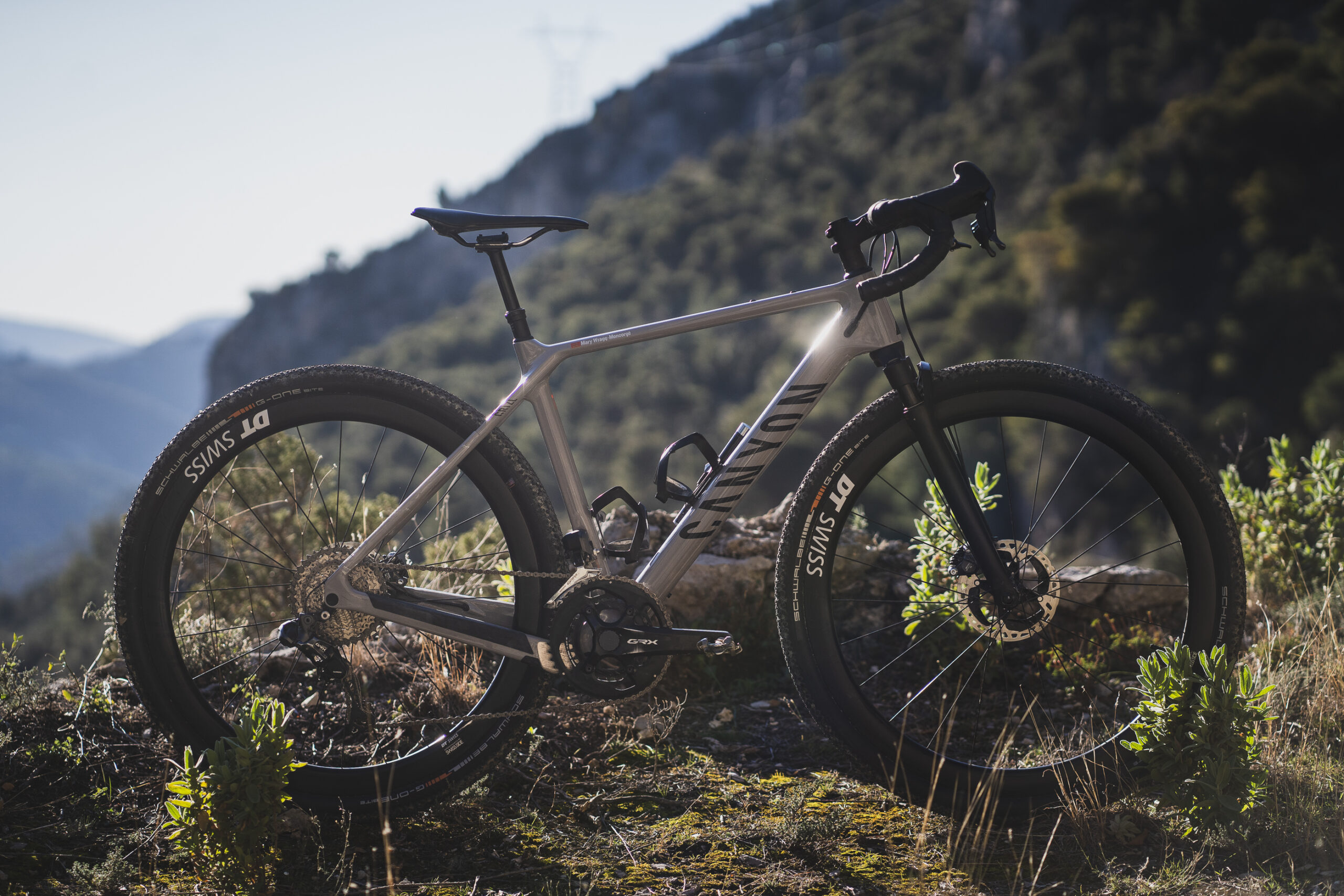
It was not always easy to turn off the part of my brain that gets frustrated at not being able to do things – while my body may have changed, my brain still wanted to be going fast. But over time I noticed my enjoyment changing and by the end I was just glad to be outdoors doing something that I love.
Climbing technical trails on my eMTB became one of my favourite things to do. The motor kept the level of exertion down, and because the speed is lower going uphill I could try more challenging features than I would have dared attempt going down. My gravel rides became more like a stroll. We wouldn’t cover more than 15 km (and slowly), but by adding in some fun singletrack, it gave me an hour and a half of exercise, which happened to be about as much as I fancied taking on.
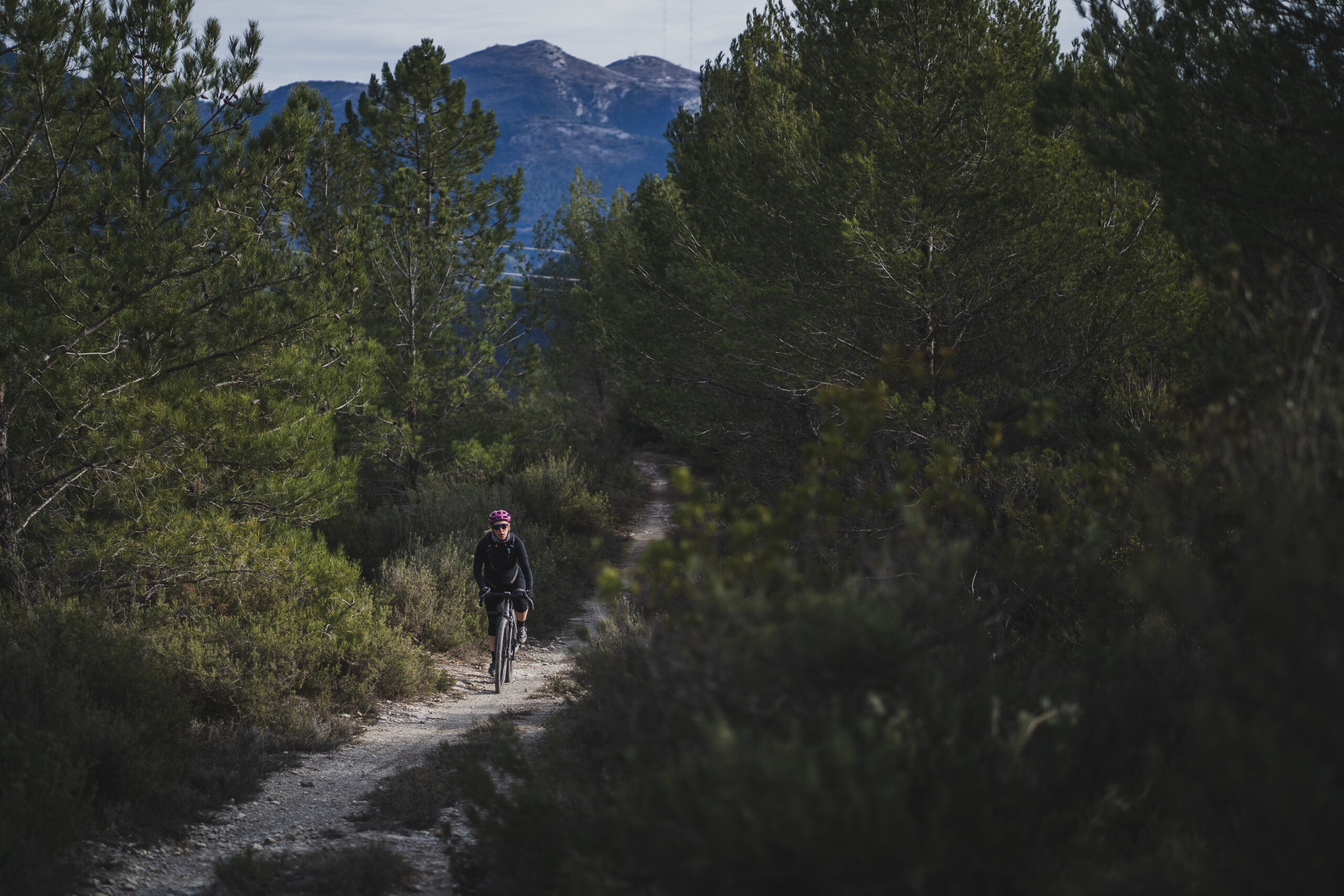
Setting up the bike for pregnancy
I found a few tips and tricks that helped me enjoy riding more as my body and balance changed.
Suspension
For mountain bikers, this is an obvious topic to talk about, but it has recently become a topic for gravel riders too. Quite simply, I chose a Canyon Grizl with a suspension fork this year. It is not something I would normally do – I usually prefer to keep my gravel bikes light and simple – but the extra comfort of the suspension fork was wonderful when I was pregnant.
For my eMTB I rode a Canyon Spectral:On, where I made a couple of changes from the standard suspension setup. I switched from the 150 mm-travel Fox 36 fork it came with to a bigger 170 mm Fox 38, and had a local suspension workshop re-work my rear shock.
On modern metric-sized shocks, many have a travel spacer insider that can be removed when the shock is serviced. This meant that I could add 5 mm of travel to the stroke, adding a little more than 10 mm travel at the rear wheel. Having more travel helped me feel more confident on the bike, and I liked having the big, beefy fork in front of me – I found it reassuring at a time when I felt more vulnerable.
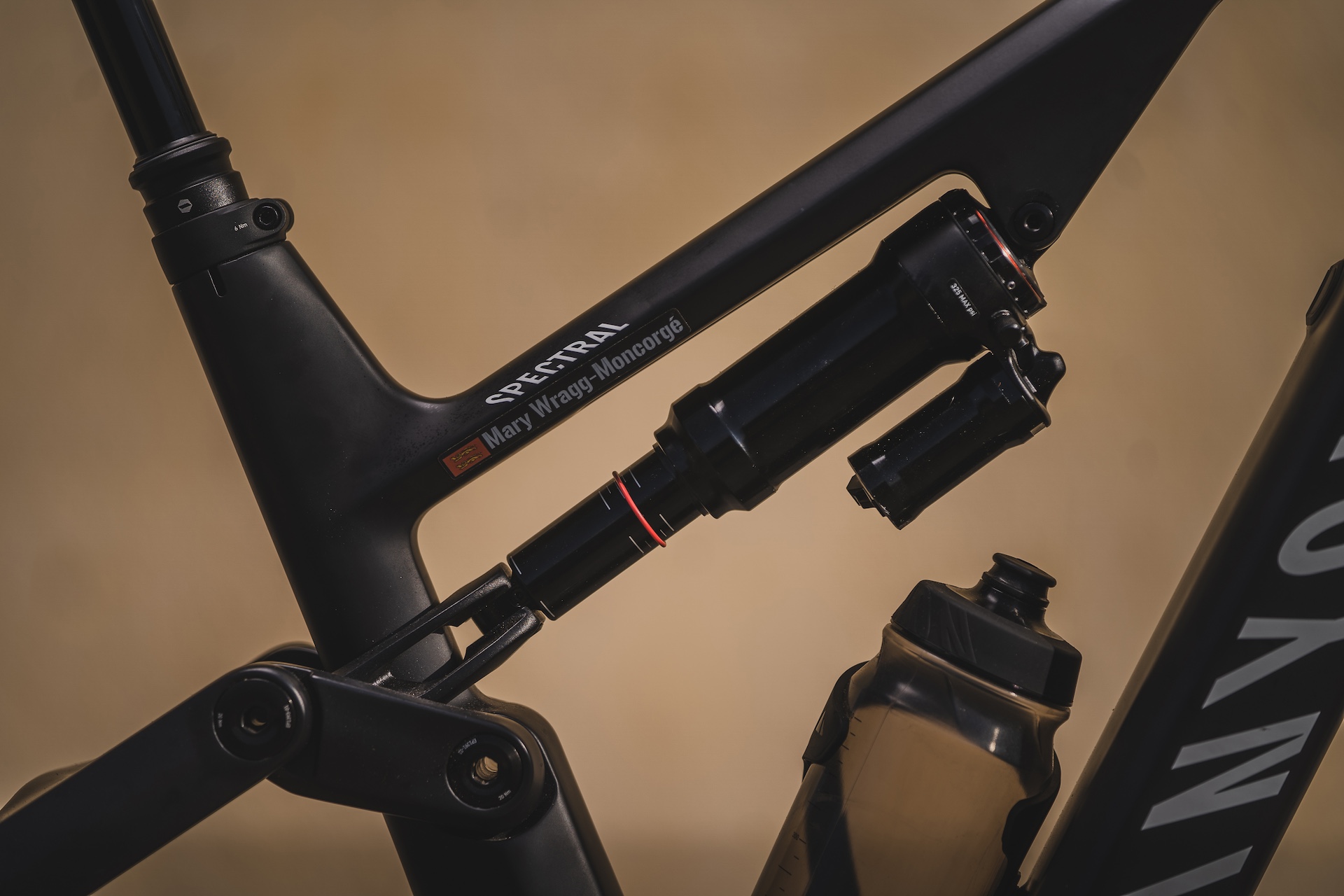
Dropper seatpost
If you do not already have a dropper seatpost on your bike, all I can say is: get one. Having the saddle low down and out the way is a godsend when you have a restricted range movement, not just for riding, but getting on and off the bike too. My advice would be to buy the longest-stroke post your frame can fit.
On my Spectral:On, it already came with a 150 mm-drop seatpost, which was fantastic. For my Grizl, I realised I could switch the stock 70 mm Iridium post for a 90 mm-travel OneUp post. As I got further into pregnancy, that small difference really helped.
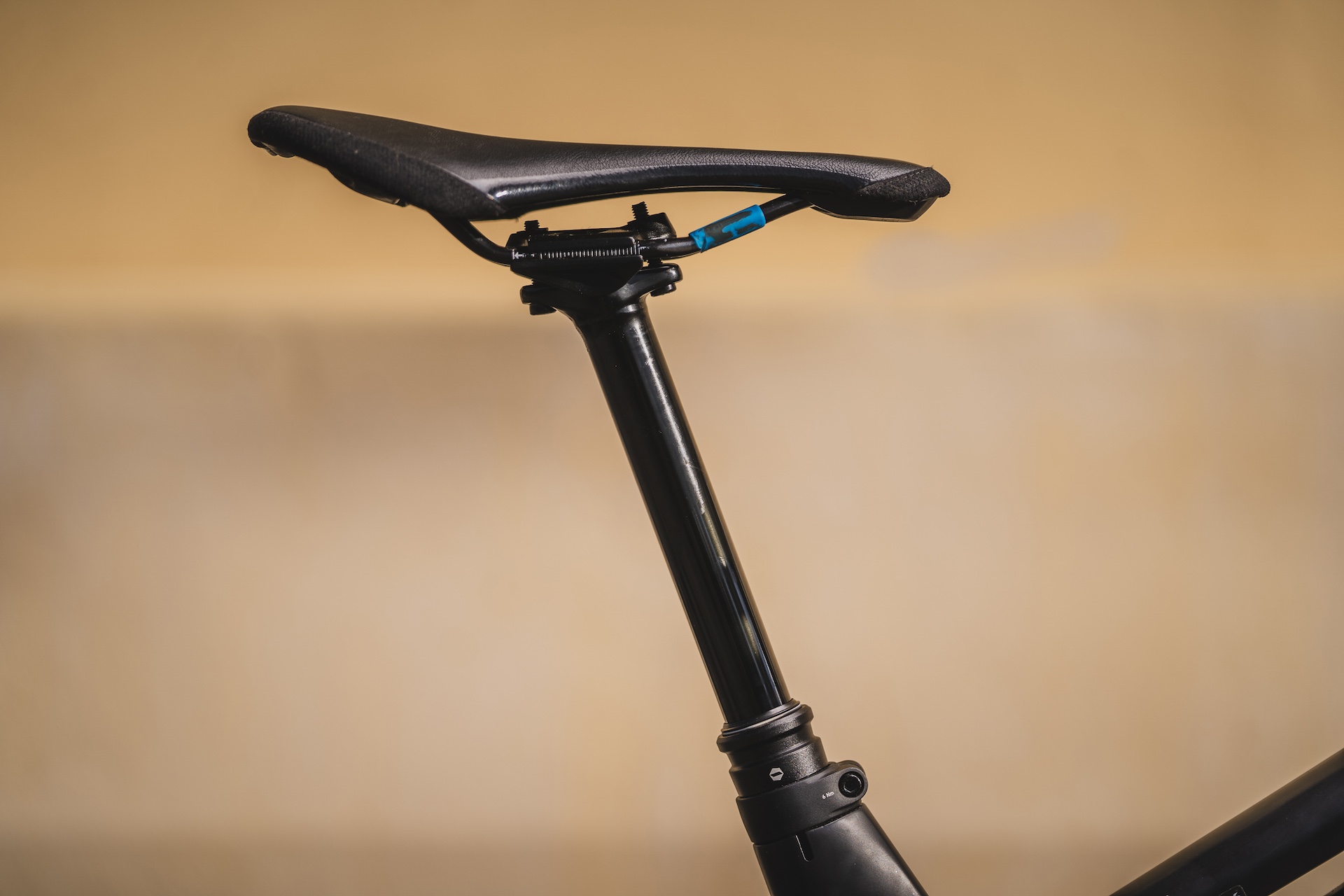
One little detail that really helped me was the PRO remote for the post. Most gravel bikes have the remote on the top of the handlebar, which is fine when you have a regular sense of balance, but I found taking a hand off the bar unsettling, so having a remote that I could mount in the drops to be much more comfortable.

Cockpit
With a baby-sized bump in front of you, it is not easy to lean forwards and grab your handlebar. The simple solution to this problem is to bring it up towards you. On my Grizl, this meant flipping the stem so it rose upwards and adding a few spacers underneath to raise the bar height. I would have liked to try a shorter stem too, but it was hard finding a 1 1/25” stem at a reasonable price, so I stuck with the stock 70 mm stem as it was already fairly short.
I was already running a 45 mm stem on my Spectral:On so there was not much room to shorten the stem, but I could raise the bar even more dramatically than on my road bike. I added a couple of spacers underneath the stem, as I did on my Grizl, but on a mountain bike you can also buy handlebars with differing amounts of rise. The Renthal Fatbar is one of the taller options on the market at 38 mm rise. The standard bar that came with the bike was a 20 mm bar, so this is a height gain of 18 mm, which really helped my riding position in the later months.
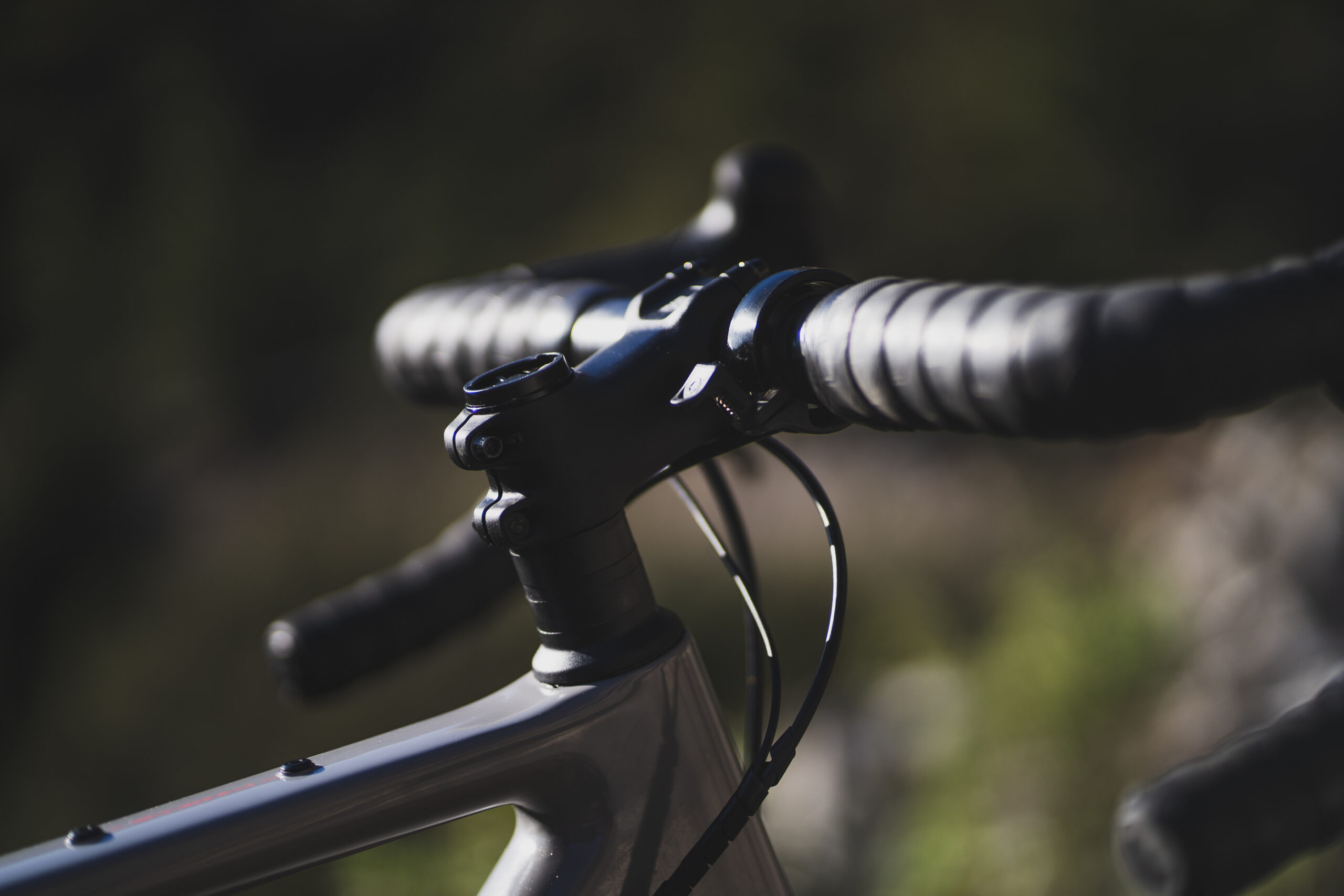
Gearing
This is more for the Grizl, as my Spectral:On already had a giant 51-tooth cassette and a powerful Shimano EP8 motor. However, my Grizl came with 1x gearing, which was too hard for me when I was trying to manage my efforts. I switched my Shimano GRX drivetrain to a 2x system, so I could have a tiny chainring to give me the easiest gear possible.
Tyres
Last, but definitely not least, are the tyres. This is simple: you want big ones as they’re more comfortable. On my Spectral:On, I already had 2.4 Michelin Wild Enduros – giant, sticky tyres that gave me all the grip in the world. On my gravel bike, I had been running 35 mm tyres, but because the Grizl can accept up to 50 mm tyres, I installed a pair of 50 mm Schwalbe G-Ones to make the most of it. I cannot say enough nice things about having extra cushioning.
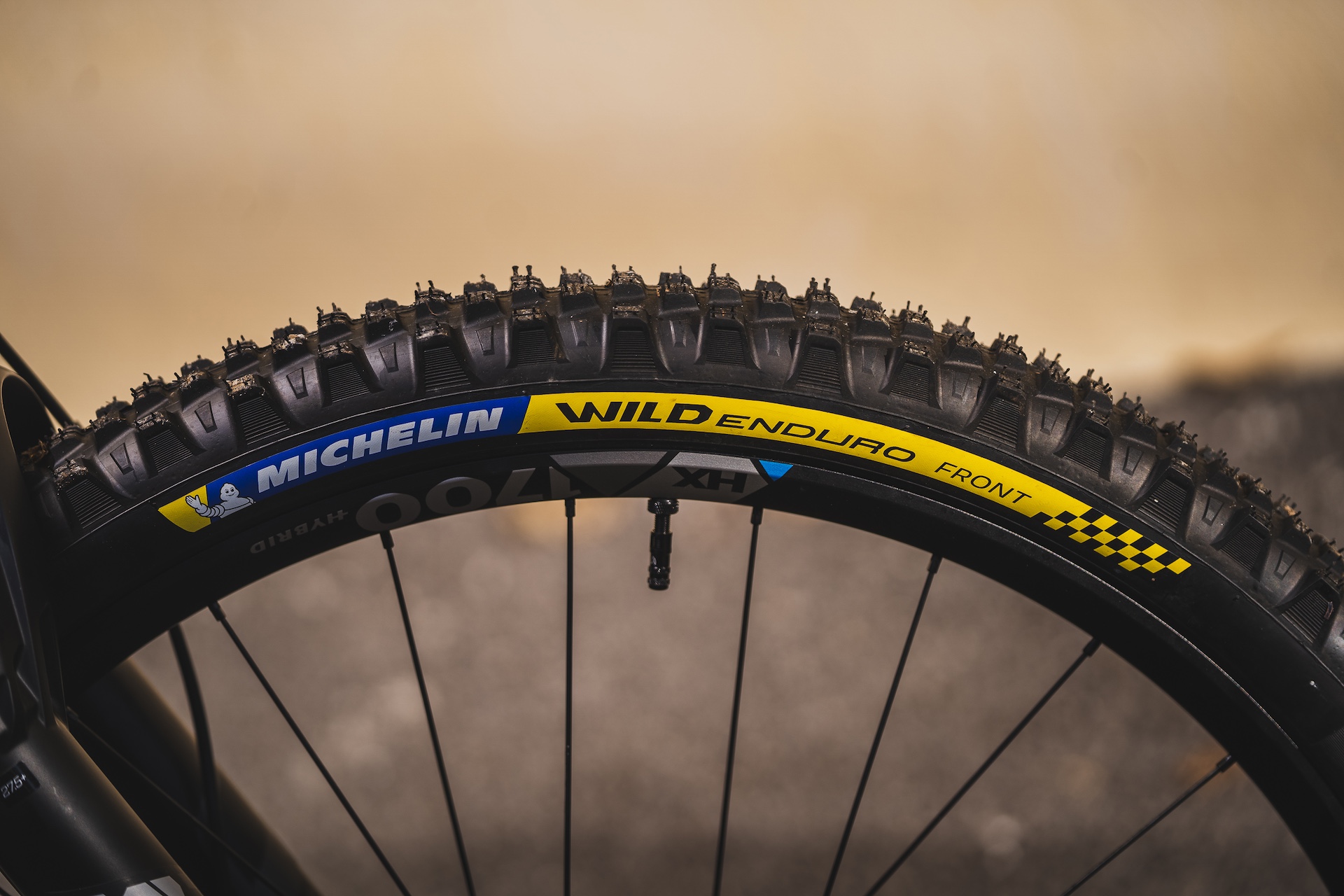
The beauty of riding while pregnant
Throughout our marriage, my husband and I have never ridden together that much. It’s what neurodivergent folks call “parallel play.” We both love riding bikes, and make space for each of us to do that, but what we enjoy riding is quite different so we usually ride separately. As my mobility decreased, my energy levels dropped and I no longer felt comfortable riding alone, so we began riding the easier zones around us together. He became more protective of me too, and I think coming riding with me helped him feel useful at a time when he could do little else other than wait.
Some days we would tour the pistes on our gravel bikes, other days the lower trails on the eMTBs. What we learned is that spending this much time together, plus the challenges pregnancy brings, brought us closer together. It was a high point of the decade we have now been together. As any new parent will tell you, having a baby doesn’t leave much time for the parents (or riding bikes), and we are still grateful that we started this phase of our lives with a solid foundation for our marriage.
Through my pregnancy I learned to enjoy just being outside on a bike more, rather than trying to push myself as I have always done. Medical science is starting to show that staying active throughout your pregnancy increases your chances of a complication-free birth, and while mine was not easy, the strength I retained from riding bikes until almost the end meant I was always ahead of the curve with my recovery.
When I felt fat, immobile and useless, those bike rides gave me my escape.
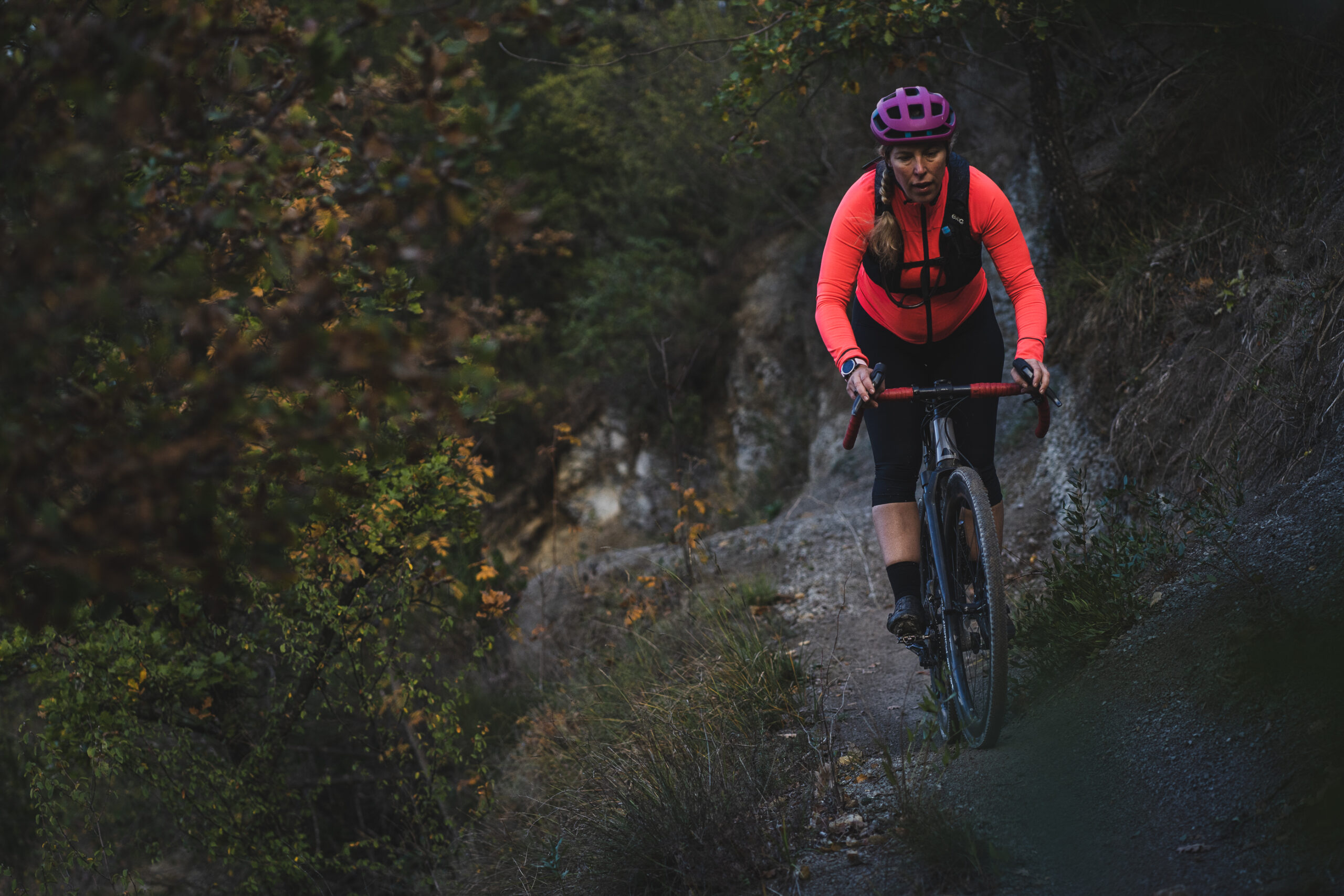
Did we do a good job with this story?

